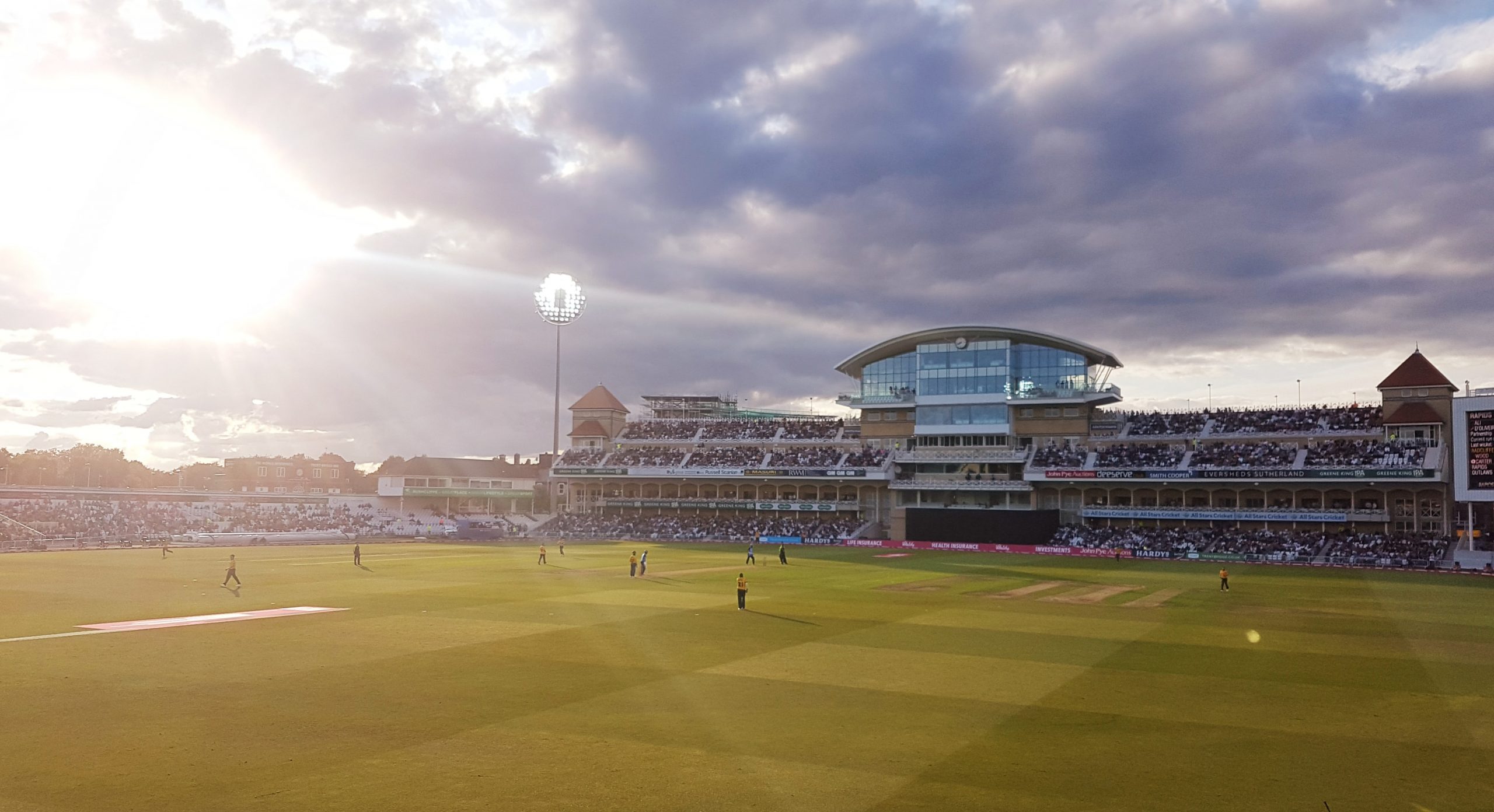In the first of a series of weekly articles for Floodlit Dreams by noted sports writers, Jon Culley laments the absence of the quintessential English summer sport…
Had fate not intervened in a way none of us could have imagined, the domestic cricket season would by now have played itself in and be risking some expansive shots. The counties would be into their fourth or fifth matches of the opening segment of the County Championship. I would have re-acquainted myself with the press boxes at Edgbaston, Trent Bridge, and quite possibly Kidderminster, where Worcestershire were scheduled to play at least their opening home match while New Road recovers from the winter floods. The fellowship of old friends would have been enjoyed anew, spirits lifted by the first hints of summer warmth.
Blessed with mostly fine, spring days from the outset, there would be enough form in the book to be discussing such matters as whether Essex, champions for two of the last three years, could make it three out of four, whether Gloucestershire, back in Division One for the first time in 15 years, had a chance of staying there, and whether Nottinghamshire, relegated without winning a single match in 2019, were looking good to bounce back. Most of the current crop of England players would still be resting after the winter tours but thoughts would be turning nonetheless to how the line-up for the June series against West Indies might look.
Of course, there has been none of that. At Trent Bridge, the groundsman Steve Birks is still tending to his square, but with no batsmen to reassure him about how nicely it is playing. At Kidderminster, the caterers who regally filled the plates of hungry players when Worcestershire were last there have been stood down. The action at Edgbaston is confined to the car park, given over to the NHS as a Covid-19 testing station, a sobering reminder of why there is no play.
Alongside the nightmare that has suddenly engulfed us, cricket is a triviality, as are all the sports we follow with such enthusiasm. In his inevitably misquoted words about where football sits alongside life and death, the great Liverpool manager Bill Shankly was actually seeking to illustrate that point.
Yet we miss sport badly and should not feel guilty for doing so. Sport enriches life, for both participant and spectator, a stimulant for the emotions that give life colour: anticipation, hope, excitement, exhilaration, joy.
Sport’s seasons add structure and predictability to life, providing reassurance, certainty. Since it follows the meteorological seasons, this is especially true of cricket, in which the first fixtures confirm the arrival of spring and the last usher in the autumn. Around the county circuit, where knots of spectators in the stands readily form friendships with their neighbours over the summer months they spend sharing their pastime, the September parting of the ways is marked with handshakes and exhortations to ‘winter well’ as they head into the damp days and long nights ahead, sustained by the knowledge that – good fortune permitting – warm greetings await the following April.
Devoted followers of the game map their lives around the cricket calendar, determining when they should schedule appointments, see relatives, when and even where to take their holidays. If you fancy a summer week in Scarborough, best check the fixtures at North Marine Road, or book well ahead. Who knows when such days will return? The last time cricket was abruptly curtailed, in September 1939, the future must have looked bleak. But even amid war, cricket was never mothballed. First-class matches did not resume until 1945 but there was enough wartime cricket for Reg Simpson, the Nottinghamshire great, to make almost 1,000 runs for the county before his first-class debut.
Cricket has changed in the last two decades. The addition of the hugely successful Twenty20 format has introduced quick-fix drama that has seen county cricket played before packed houses in a way that was once scarcely imaginable and that’s no bad thing. Whether its mutation into The Hundred takes off too remains to be seen; the much-trumpeted made-for-TV hundred-balls-an-innings version has been delayed until 2021.
Not that the longer, traditional games are without all those energising stimulants. Indeed, there is time enough in a Test or four-day match to experience the full range of emotions and the satisfaction of winning can be all the greater if it is achieved as time, overs or wickets run out. I was fortunate enough to be working at Edgbaston on August 7, 2005, the moment Australia’s 16-year grip on the Ashes began to loosen, when 99 minutes of heart-thumping, breathless tension erupted in the most glorious cacophony as Geraint Jones took a catch down the leg side to dismiss Michael Kasprowicz and Australia, needing 107 to win to take a 2-0 series lead on the fourth morning but with only two wickets in hand, had lost by just two runs.
I miss those moments of shared euphoria, yet it is those quieter days I probably yearn for most, when a county cricket ground can feel like an oasis of convivial calm amid an increasingly frenetic world. Heaven knows, we could do with some safe havens now.
*Jon Culley began his career on the Doncaster Gazette before joining the sports desk of the Sheffield Morning Telegraph in 1977. He has been writing about cricket for more than 35 years, mostly for The Independent, The Daily Telegraph and ESPNcricinfo.com. His favourite ground is Trent Bridge, Nottingham.






Leave A Comment